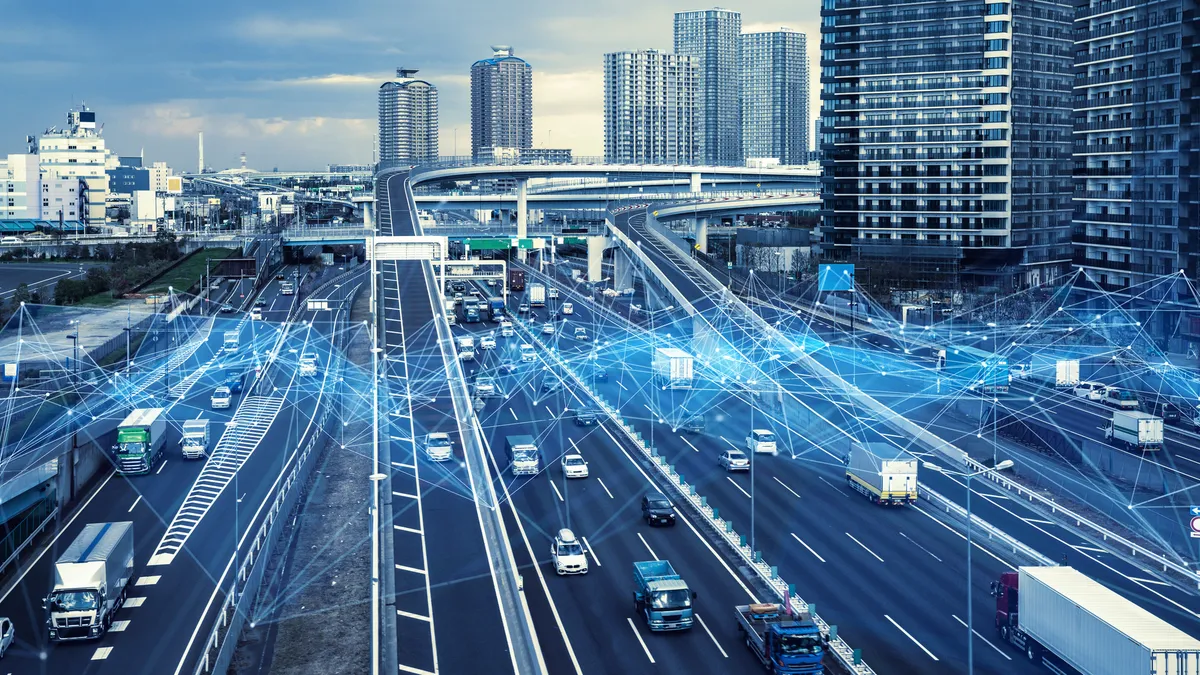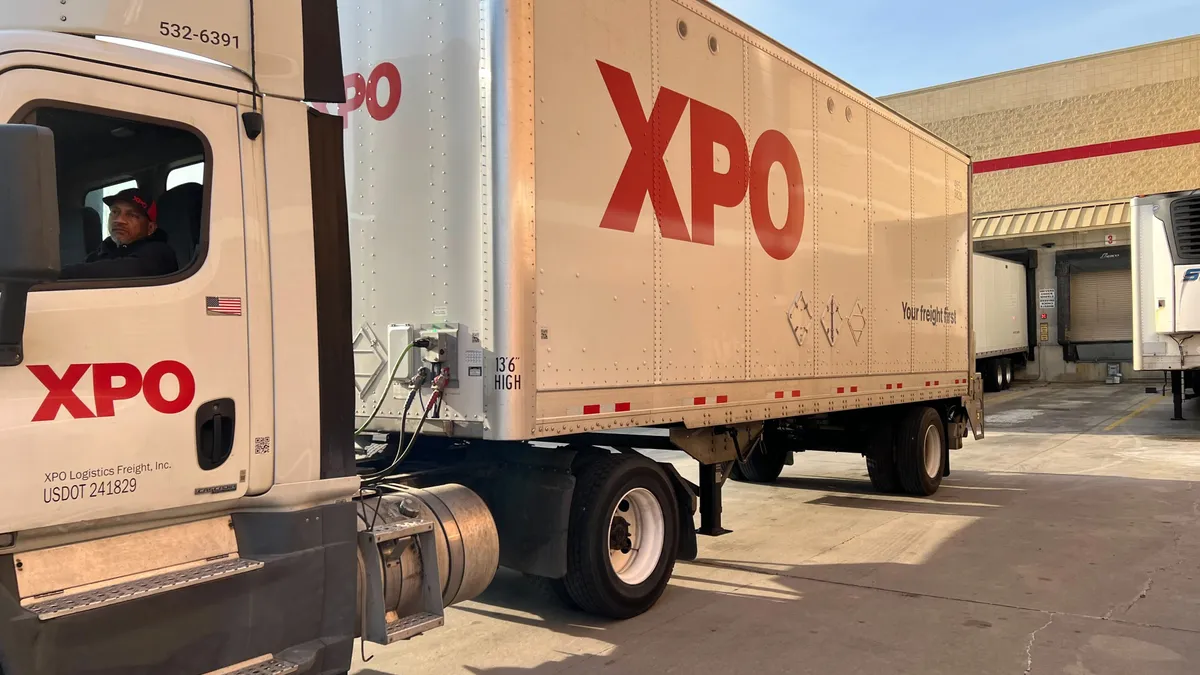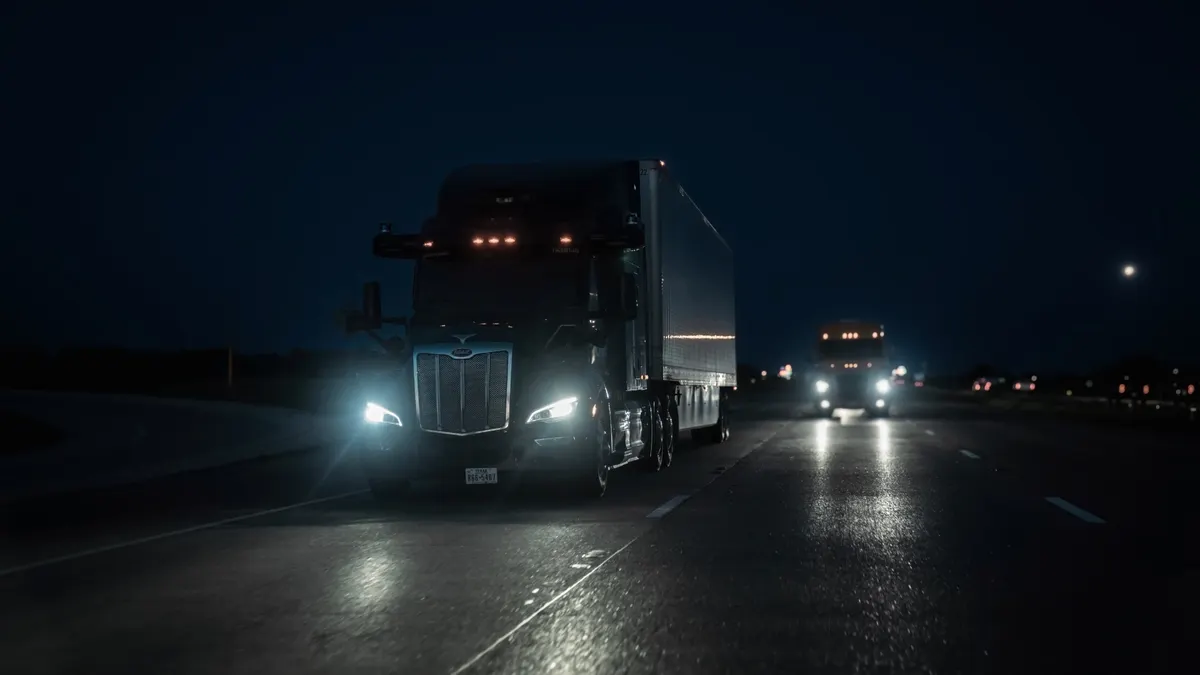When Mattress Next Day CEO Martin Seeley first considered adopting a transportation management system, he wasn't sure the technology was the right fit for the online mattress retailer.
But once Mattress Next Day implemented Transporeon’s TMS, Seeley realized it was a game changer “for next-day delivery businesses like mine.” The TMS’ critical features include real-time visibility, route planning and scheduling.
Supply chains have become more global and intermodal, and consumers want fast shipping and real-time visibility. Shippers and carriers need a TMS that integrates with other systems and uses emerging technology to keep up with modern demands.
Numerous feature-rich TMS platforms are on the market, but there's always room for improvement, especially as logistics challenges evolve.
“TMS’s are great. They do a lot of things really well,” said Brock Johns, director analyst in the logistics and technology team at Gartner. “But they don't necessarily solve all problems.”
A connected, integrated TMS
Above all, shippers and carriers’ want their TMS’s to integrate smoothly with other technology systems. For shippers, that primarily means connecting to warehouse and yard management systems to avoid keeping data siloed in separate applications.
Integrating technology platforms is especially important today, when businesses often have several sourcing locations and myriad modes of transport, Johns said.
“I hesitate to say we'll eventually get to ‘the everything TMS,’” Johns said. “But I think we are slowly, incrementally inching [in] that direction.”
Lining up transportation and inventory with an integrated TMS helps shippers — and by extension, consumers — trace freight throughout the supply chain.
Ray Lauzums, the owner of online toys, games and collectibles retailer Poggers, said his Tailwind TMS is “super useful for connecting everything we do,” including invoicing, recording driver logs and managing transportation data. In the future, he’d like to see the TMS integrate with internet-connected devices and blockchain.
“I hesitate to say we'll eventually get to ‘the everything TMS.’ But I think we are slowly, incrementally inching [in] that direction.”

Brock Johns
Director analyst in the logistics and technology team at Gartner
Brett Phillips, president and CEO of The 1975 Transportation Group, uses McLeod’s TMS and was able to integrate the system with telematics and electronic data interchange. Phillips said a TMS is a must-have in today’s operating environment, as fleets have endured a long freight recession and high costs, making it critical to stay lean.
“Automation within your TMS helps your team do more with fewer people,” Phillips said.
Carriers often work with multiple brokers on several different load boards, which aren’t tied directly into the carrier TMS. That can lead to “app fatigue,” said Sean Gill, VP of business solutions at Arrive Logistics, as carriers are asked to download dozens of different apps.
Arrive Logistics has built a proprietary TMS with web portals for carriers and shippers. Businesses also have access to Arrive’s load data through an API integration, enabling them to view load information directly in their own TMS.
As tech evolves, so should TMS platforms
A lot of existing technology hasn't been optimized for TMS platforms yet. For example, some TMS’s are still web- or desktop-based and are not compatible for mobile devices, Gill said.
That was one reason Seeley picked Transporeon. He said its mobile access “runs very smoothly,” compared to others such as SAP, which has “poorly built” mobile access apps.
Email integration is another shortcoming for some TMS platforms. “As much data as we store in a TMS, there is probably five times as much data in email inboxes,” Gill said. This disconnect leads to manual data transfer, or information that never makes it into the TMS.
TMS vendors have started to address the disconnect between email and TMS platforms. Arrive Logistics’ software scans carrier inboxes and classifies email, entering the information into the TMS.
Other technologies, such as predictive analytics and artificial intelligence, are newer to the market, and carriers and shippers are eager to see those capabilities come to TMS platforms.
“As much data as we store in a TMS, there is probably five times as much data in email inboxes."

Sean Gill
VP of business solutions at Arrive Logistics
Lauzums said he wants machine learning in a TMS that can more quickly predict delivery times and spot problematic shipments to avoid delays, an issue his company faced during a recent snowstorm.
“Tailwind flagged the delay accurately. But they didn't give any ideas on how it might affect other routes or potential fixes,” Lauzums said. “If Tailwind's machine learning could predict delays better, we could have talked to customers sooner about options to keep things on schedule.”
Phillips said he’d like to see more TMS-generated fleet summaries and dashboards to help automate KPI monitoring.
Beyond that, AI and large language models are starting to change how users interact with TMS platforms. Think of it as “chatbots on steroids,” Johns said. Instead of inputting bill of lading numbers, a user can ask the status of a shipment going from A to B and receive the answer in real time. If a customer calls to ask for a status update, this could save time, as the language model can finds answers rather than a person manually searching by order number.
Generative AI also has the potential to make TMS interfaces more user-friendly. If a company’s resident TMS expert leaves the firm, “there's a dearth of that knowledge,” Johns said. But Gen AI can allow interaction with the TMS in a way that’s intuitive, such as allowing users to ask how to do a task or where to find a specific data point.
Johns said TMS vendors are starting to explore how this capability can fit into the TMS.
“It's a way to extend the knowledge to much broader groups of people and empower more people that can use that TMS,” he noted.
Correction: A previous version of a paragraph in this story misidentified how shippers and carriers engage with Arrive Logistics' proprietary TMS. The paragraph was updated with a more accurate description.






















